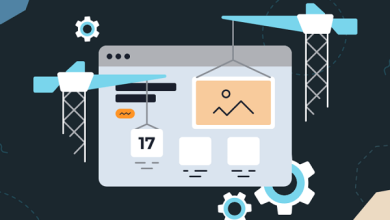An Easy Guide To Understanding The Different Database Systems

There are many different types of database systems in the world, and it can be difficult to understand them all. In this blog post, we will provide an easy guide to understanding the different database systems. We will start by discussing the three most common types: relational, document-oriented, and key-value stores. After that, we will discuss some of the other less common systems. By the end of this post, you will have a basic understanding of all the major types of database systems!
A Great Way To Start Is Getting A Education In Data Science
A great way to start is getting an education in data science. With the demand for data-savvy professionals on the rise, there has never been a better time to make a career switch to this field. There are many courses to take and look into and even a lot of those are offered online. For example, you can get a Master of Data Science Online. But before you do, it’s important to have a strong understanding of the different database systems that are out there. In this blog post, we will take a closer look at the most common ones.
Relational Database Systems
Relational Database Systems are the most commonly used type of database system. A relational database is a collection of data that is organized into tables, the tables are connected to each other by relationships. This type of database system is easy to use and understand. It is perfect for small to medium-sized businesses. Relational databases are also very reliable and secure. They are perfect for storing data that needs to be accessed by multiple users.
When choosing a relational database system, you need to consider the size of your business and the amount of data that you will be storing. You also need to think about how you will be accessing the data. Some relational databases are better for online access, while others are better for offline access. If you are looking for a reliable and easy-to-use database system, then a relational database is the right choice for you.
Document-Oriented Database Systems
Document-oriented database systems are a newer type of database system that is growing in popularity. They are different from the other types of database systems because they focus on documents instead of tables. This makes them ideal for applications that need to store and manage a lot of unstructured data, such as text files, images, and videos.
One of the benefits of document-oriented database systems is that they are very easy to use. The data is stored in the form of documents, so you don’t have to worry about creating and managing tables and relationships. This makes them a good choice for small applications that don’t need a lot of performance or scalability.
Document-oriented database systems are also very scalable. This makes them a good choice for larger applications that need to store a lot of data. The scalability comes from the fact that document-oriented database systems can distribute the data across multiple servers, which allows them to handle more traffic and scale up to more easily than traditional database systems.
Finally, document-oriented database systems are very flexible. This means that you can use them to store any type of data, including unstructured data, semi-structured data, and even structured data. This flexibility makes them a good choice for applications that need to store a variety of different types of data.
Key-Value Stores
Key-value stores are the simplest type of database. In a key-value store, each record is stored as a single key and value pair. The key can be any data type but is typically a string or an integer. The value can be any type of data, including another array or object.
One benefit of using a key-value store is that they are very fast and efficient. They can be implemented using a simple data structure, like a hash table, which makes the lookup and retrieval of records very quick.
Another benefit of key-value stores is that they are easy to scale. As the number of records in the database grows, you can simply add more servers to the cluster and the database will scale automatically.
However, key-value stores have some limitations. They are not well suited for complex queries or data analysis. If you need to query your data or perform complex operations, then you should consider using a different type of database system.
Hierarchical Database Systems
Hierarchical database systems are a type of database system that stores data in a tree structure. This makes it easy to traverse the data and find what you are looking for. The downside is that hierarchical databases can be slow when performing complex queries. Another downside is that they can be difficult to scale up as the size of the database increases.
Hierarchical database systems are commonly used for storing data about organizations, such as employee information or customer information. They can also be used for storing geographical data, such as the location of stores in a retail chain.
Network Database Systems
A network database system is a type of distributed database system. In other words, it is a database that resides on more than one computer or server. This makes it an ideal choice for applications that require high availability and scalability. The data in a network database system is partitioned across multiple servers, which allows the system to scale out as needed. This also ensures that the system remains available even if one or more servers fail.
How To Choose A Database System
When it comes to choosing a database system, there are many different factors you need to take into account. The first step is to figure out what your needs are, what kinds of data do you need to store? How much data do you need to store? What kind of access do you need? Do you need real-time access to your data? How complex is your data?
Once you have a good understanding of your needs, you can start to evaluate different database systems. There are many different types of databases, from traditional relational databases to newer NoSQL databases. Each system has its own strengths and weaknesses, so it’s important to choose the system that best suits your needs. If you’re not sure which system is right for you, there are a number of resources available to help you make your decision.
In conclusion, there are many different types of database systems available, and each one has its own strengths and weaknesses. It’s important to choose the system that best suits your needs. If you’re not sure which system is right for you, there are a number of resources available to help you make your decision.
- What To Do if You’ve Been Injured at a Las Vegas Casino
- Del Mar Energy Inc. attracts investors to launch Northern Lights carbon capture and storage project
- Pathways to widespread crypto acceptance: The rise of digital currency in everyday life
- Choosing the Right Swimwear for Swimming Lessons or Water Sports
- Why First Aid Training is Crucial for Workplace Safety and Employee Well-being
- How Personal Injury Attorneys Fight for Your Rights and Fair Compensation
- Roll Off Dumpster Houston: The Go-To Solution for Efficient Waste Removal
- Yapnews.in/construction-machinery-excavator/
- Cycling Made Easier: A Cyclist’s Review of the HOTO Air Pump Pocket for Achieving Optimal Tire Pressure
- Exploring Scientific Narratives at WorldWideScienceStories.com Pcnok
- 10 Car driving tips & techniques for beginners
- Understanding 127.0.0.1:62893: Your Comprehensive Guide to Loopback Addresses and Troubleshooting Common Errors
- Crypto30x .com: How to Trade in Cryptocurrencies- A Step-by-Step Guide
- Unlock Your Instagram Potential: Tips and Tools from Usanewscity.com
- Unlock the Road with Navi-World: Your Ultimate Destination for Navigation Solutions





